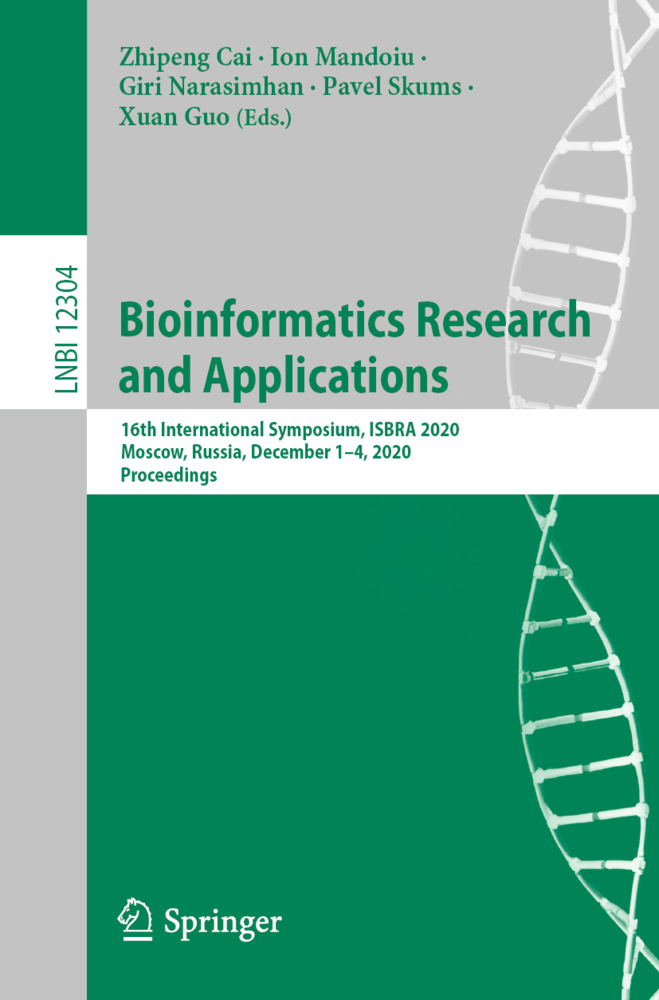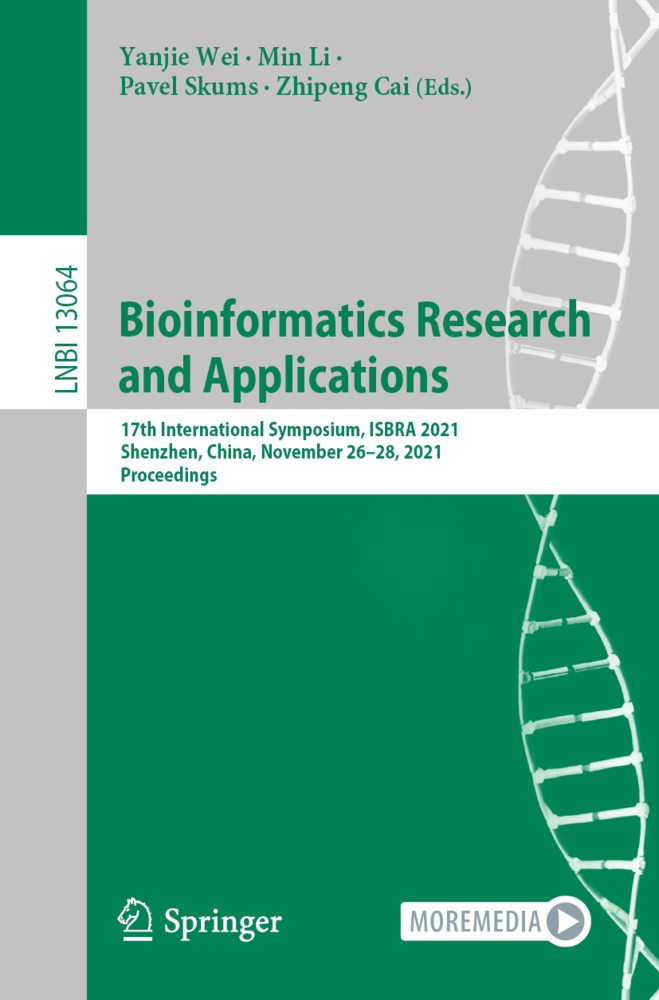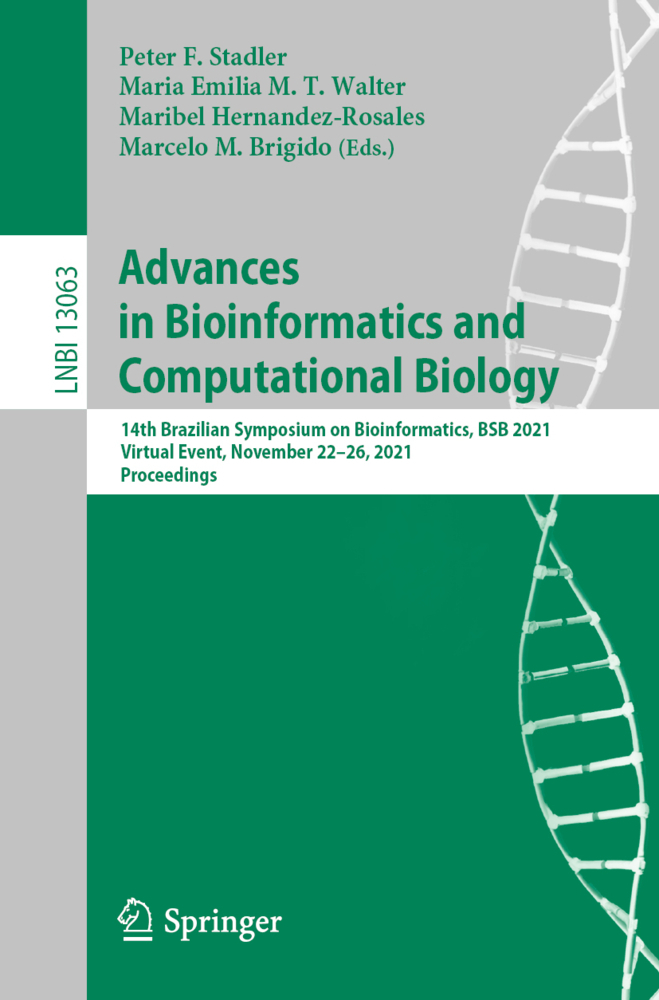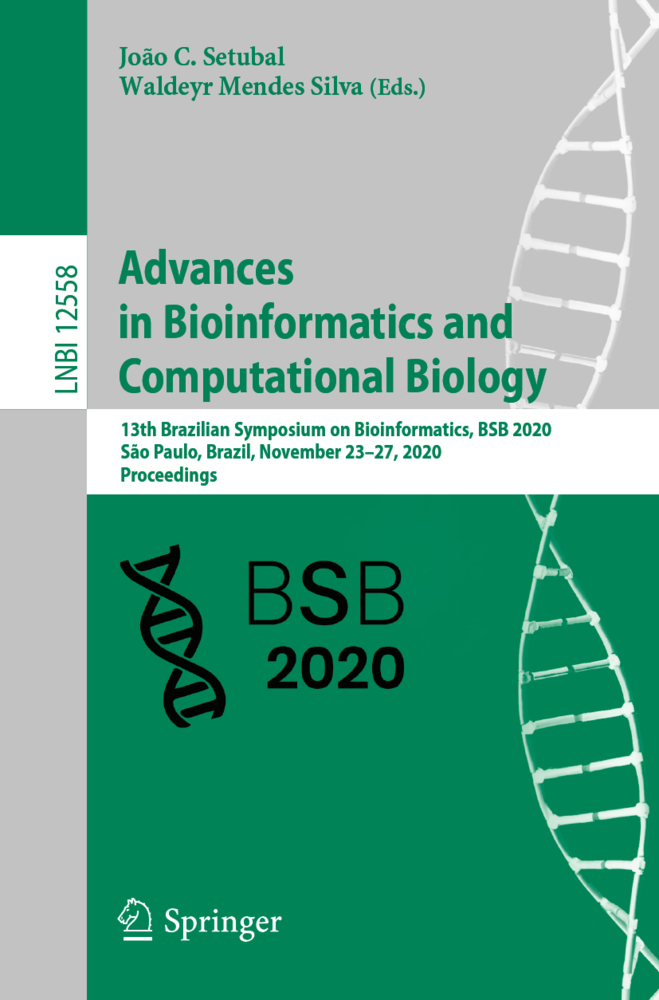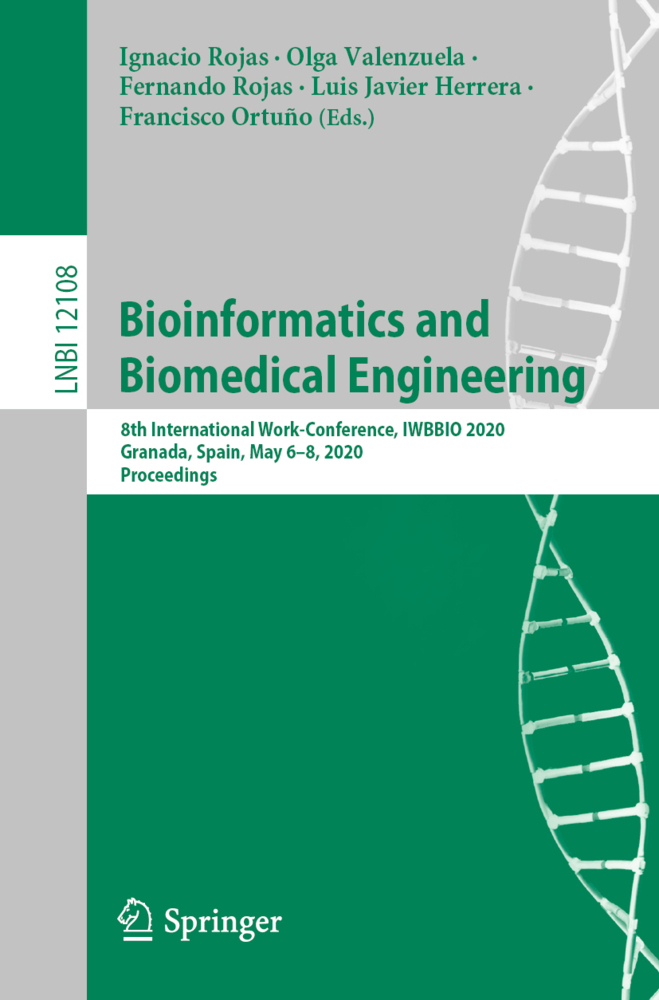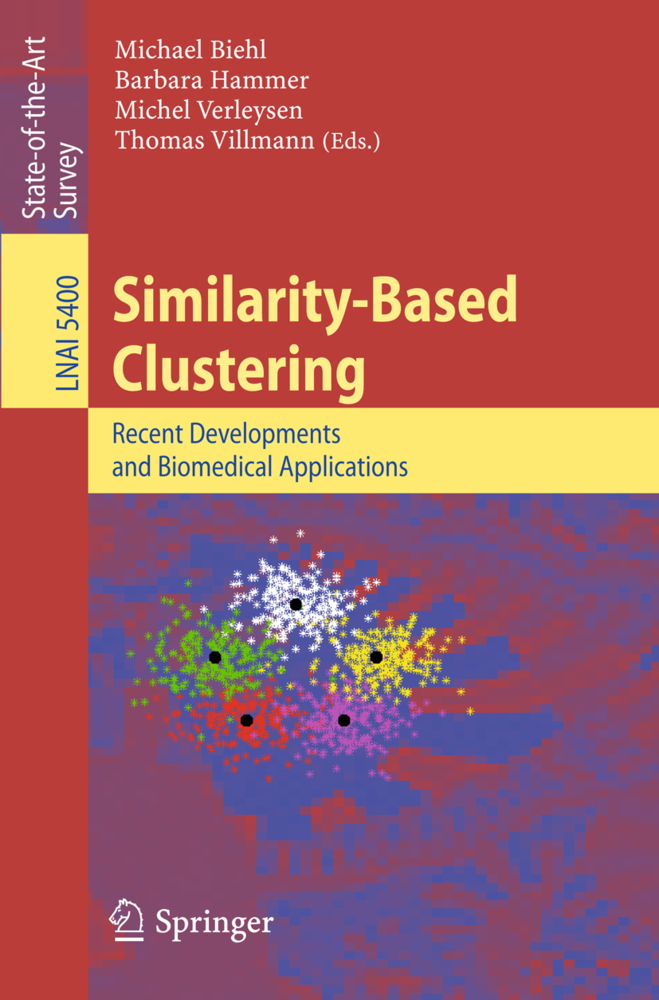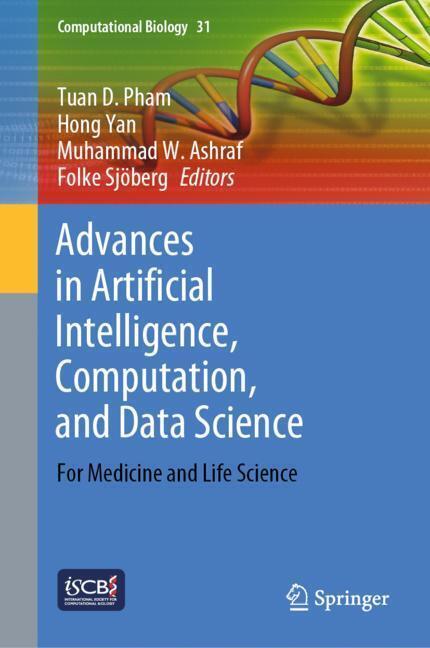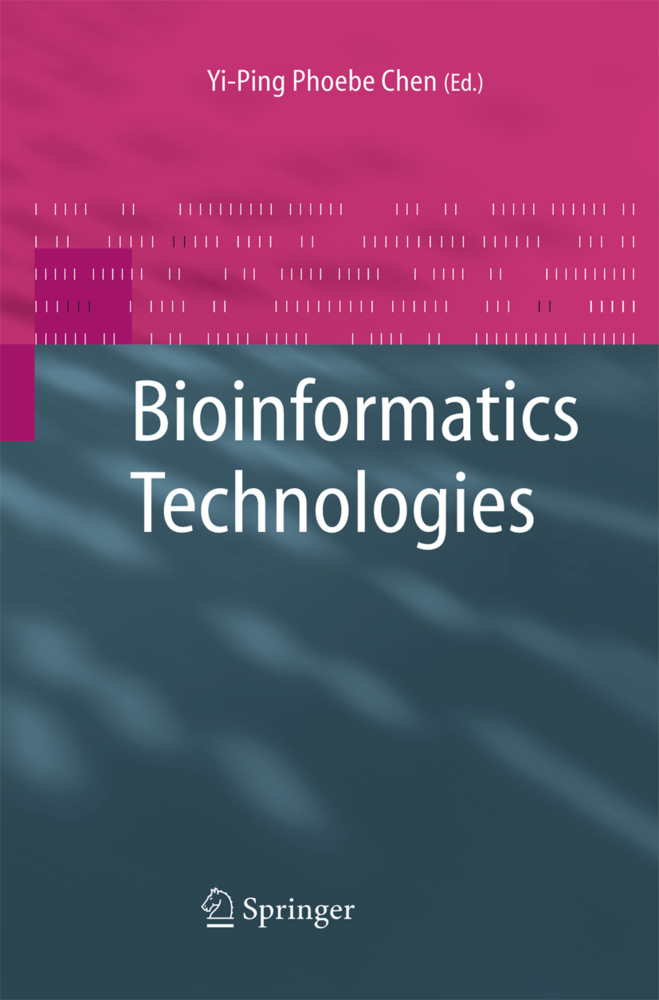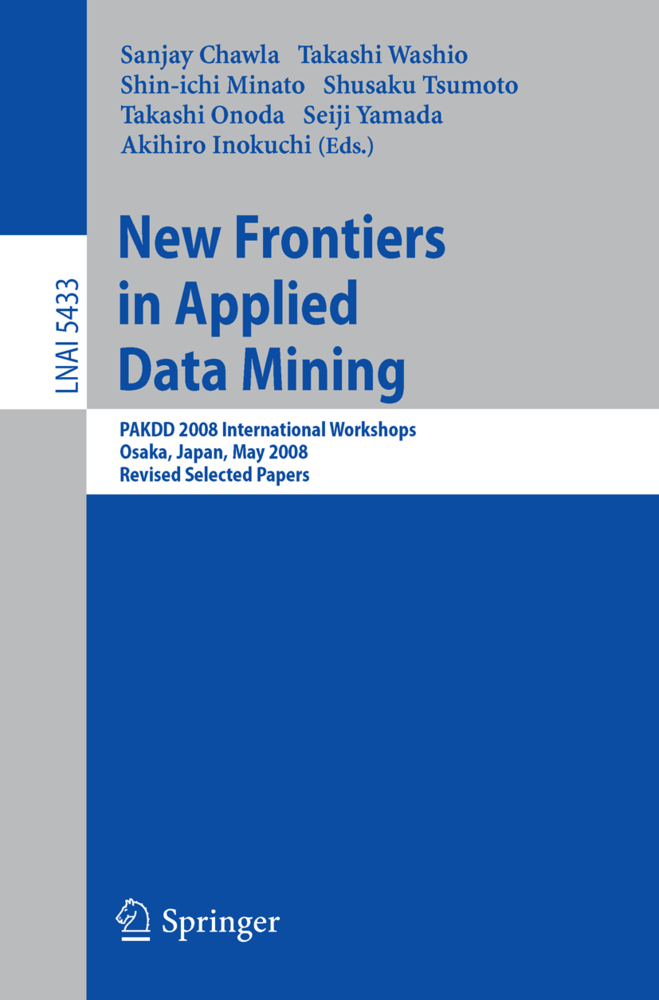Bioinformatics Research and Applications
16th International Symposium, ISBRA 2020, Moscow, Russia, December 1-4, 2020, Proceedings
Bioinformatics Research and Applications
16th International Symposium, ISBRA 2020, Moscow, Russia, December 1-4, 2020, Proceedings
This book constitutes the proceedings of the 16th International Symposium on Bioinformatics Research and Applications, ISBRA 2020, held in Moscow, Russia, in December 2020.
The 23 full papers and 18 short papers presented in this book were carefully reviewed and selected from 131 submissions. They were organized in topical sections named: genome analysis; systems biology; computational proteomics; machine and deep learning; and data analysis and methodology.
SPOC: Identification of Drug Targets in Biological Networks via Set Preference Output Control
Identification of a novel compound heterozygous variant in NBAS causing bone fragility by the type of osteogenesis imperfecta
Isoform-disease association prediction by data fusion
EpIntMC: Detecting Epistatic Interactions using Multiple Clusterings
Improving Metagenomic Classi cation using discriminative k-mers from sequencing data
Dilated-DenseNet For Macromolecule Classifi cation In Cryo-electron Tomography
Ess-NEXG: Predict Essential Proteins by Constructing a Weighted
Protein Interaction Network based on Node Embedding and XGBoost
mapAlign: an efficient approach for mapping and aligning long reads to reference genomes
Functional Evolutionary Modeling Exposes Overlooked Protein-Coding Genes Involved in Cancer
Testing the Agreement of Trees with Internal Labels
SVLR: Genome Structure Variant Detection Using Long Read Sequencing Data
De novo prediction of drug-target interaction via Laplacian regularized Schatten-p norm minimization
Diagnosis of ASD from rs-fMRIs based on brain dynamic networks
miRNA-Disease Associations Prediction Based on Negative Sample Selection and Multi-layer Perceptron
Checking Phylogenetic Decisiveness in Theory and in Practice
TNet: Phylogeny-Based Inference of Disease Transmission Networks Using Within-Host Strain Diversity
Cancer breakpoint hotspots versus individual breakpoints prediction by machine learning models
Integer Linear Programming Formulation for the Uni ed DuplicationLoss-Coalescence Model
In silico-guided discovery of potential HIV-1 entry inhibitors mimicking bNAb N6: virtual screening, docking, molecular dynamics, and post-molecular modeling analysis
Learning Structural Genetic Information via Graph Neural Embedding
A New Network-based Tool to Analyse Competing Endogenous RNAs
Deep Ensemble models for 16S Ribosomal Gene Classification
Search for tandem repeats in the rst chromosome from the rice genome
Deep Learning approach with rotate-shift invariant input to predict protein homodimer structure
Development of a Neural Network-Based Approach for Prediction of Potential HIV-1 Entry Inhibitors Using Deep Learning and Molecular Modeling Methods
In Silico Design and Evaluation of Novel Triazole-Based Compounds as Promising Drug Candidates Against Breast Cancer
Identification of essential genes with NemoPro le and various machine learning models
NemoLib: Network Motif Libraries for network motif detection and analysis
Estimating enzyme participation in metabolic pathways for microbial communities from RNA-seq data
Identication of Virus-Receptor Interactions based on Network Enhancement and Similarity
Enhanced functional pathway annotations for differentiallyexpressed gene clusters
Automated Detection of Sleep Apnea from Abdominal Respiratory Signal using Hilbert-Huang Transform
Na/K-ATPase glutathionylation: in silico modeling of reaction mechanisms
HiChew: a tool for TAD clustering in embryogenesis
Generation of Hi-C maps from DNA sequence data using Deep Learning
SC1: A Tool for Interactive Web-Based Single Cell RNA-Seq Data Analysis
Quantitative analysis of the dynamics of maternal gradients in the early Drosophila embryo
Atom Tracking Using Cayley Graphs
SPOC: Identification of Drug Targets in Biological Networks via Set Preference Output Control
Identification of a novel compound heterozygous variant in NBAS causing bone fragility by the type of osteogenesis imperfecta.
The 23 full papers and 18 short papers presented in this book were carefully reviewed and selected from 131 submissions. They were organized in topical sections named: genome analysis; systems biology; computational proteomics; machine and deep learning; and data analysis and methodology.
Mitochondrial Haplogroup Assignment for High-Throughput Sequencing Data from Single Individual and Mixed DNA Samples
Signet Ring Cell Detection with Classi cation Reinforcement Detection NetworkSPOC: Identification of Drug Targets in Biological Networks via Set Preference Output Control
Identification of a novel compound heterozygous variant in NBAS causing bone fragility by the type of osteogenesis imperfecta
Isoform-disease association prediction by data fusion
EpIntMC: Detecting Epistatic Interactions using Multiple Clusterings
Improving Metagenomic Classi cation using discriminative k-mers from sequencing data
Dilated-DenseNet For Macromolecule Classifi cation In Cryo-electron Tomography
Ess-NEXG: Predict Essential Proteins by Constructing a Weighted
Protein Interaction Network based on Node Embedding and XGBoost
mapAlign: an efficient approach for mapping and aligning long reads to reference genomes
Functional Evolutionary Modeling Exposes Overlooked Protein-Coding Genes Involved in Cancer
Testing the Agreement of Trees with Internal Labels
SVLR: Genome Structure Variant Detection Using Long Read Sequencing Data
De novo prediction of drug-target interaction via Laplacian regularized Schatten-p norm minimization
Diagnosis of ASD from rs-fMRIs based on brain dynamic networks
miRNA-Disease Associations Prediction Based on Negative Sample Selection and Multi-layer Perceptron
Checking Phylogenetic Decisiveness in Theory and in Practice
TNet: Phylogeny-Based Inference of Disease Transmission Networks Using Within-Host Strain Diversity
Cancer breakpoint hotspots versus individual breakpoints prediction by machine learning models
Integer Linear Programming Formulation for the Uni ed DuplicationLoss-Coalescence Model
In silico-guided discovery of potential HIV-1 entry inhibitors mimicking bNAb N6: virtual screening, docking, molecular dynamics, and post-molecular modeling analysis
Learning Structural Genetic Information via Graph Neural Embedding
A New Network-based Tool to Analyse Competing Endogenous RNAs
Deep Ensemble models for 16S Ribosomal Gene Classification
Search for tandem repeats in the rst chromosome from the rice genome
Deep Learning approach with rotate-shift invariant input to predict protein homodimer structure
Development of a Neural Network-Based Approach for Prediction of Potential HIV-1 Entry Inhibitors Using Deep Learning and Molecular Modeling Methods
In Silico Design and Evaluation of Novel Triazole-Based Compounds as Promising Drug Candidates Against Breast Cancer
Identification of essential genes with NemoPro le and various machine learning models
NemoLib: Network Motif Libraries for network motif detection and analysis
Estimating enzyme participation in metabolic pathways for microbial communities from RNA-seq data
Identication of Virus-Receptor Interactions based on Network Enhancement and Similarity
Enhanced functional pathway annotations for differentiallyexpressed gene clusters
Automated Detection of Sleep Apnea from Abdominal Respiratory Signal using Hilbert-Huang Transform
Na/K-ATPase glutathionylation: in silico modeling of reaction mechanisms
HiChew: a tool for TAD clustering in embryogenesis
Generation of Hi-C maps from DNA sequence data using Deep Learning
SC1: A Tool for Interactive Web-Based Single Cell RNA-Seq Data Analysis
Quantitative analysis of the dynamics of maternal gradients in the early Drosophila embryo
Atom Tracking Using Cayley Graphs
SPOC: Identification of Drug Targets in Biological Networks via Set Preference Output Control
Identification of a novel compound heterozygous variant in NBAS causing bone fragility by the type of osteogenesis imperfecta.
Cai, Zhipeng
Mandoiu, Ion
Narasimhan, Giri
Skums, Pavel
Guo, Xuan
| ISBN | 978-3-030-57820-6 |
|---|---|
| Artikelnummer | 9783030578206 |
| Medientyp | Buch |
| Auflage | 1st ed. 2020 |
| Copyrightjahr | 2020 |
| Verlag | Springer, Berlin |
| Umfang | XIV, 418 Seiten |
| Abbildungen | XIV, 418 p. 143 illus., 110 illus. in color. |
| Sprache | Englisch |

